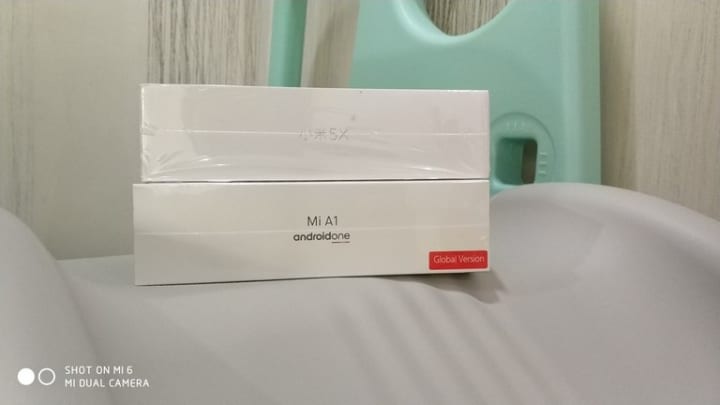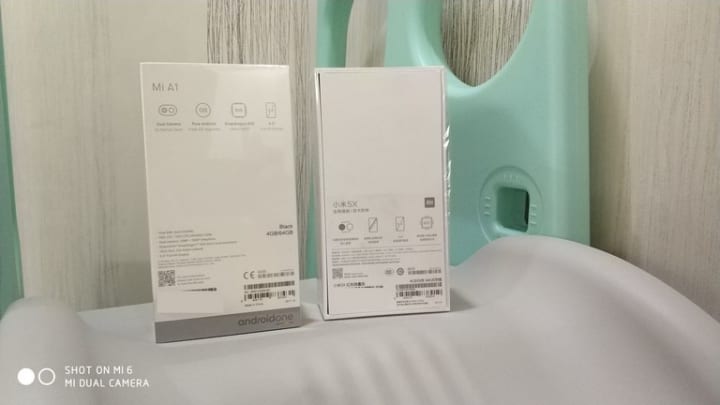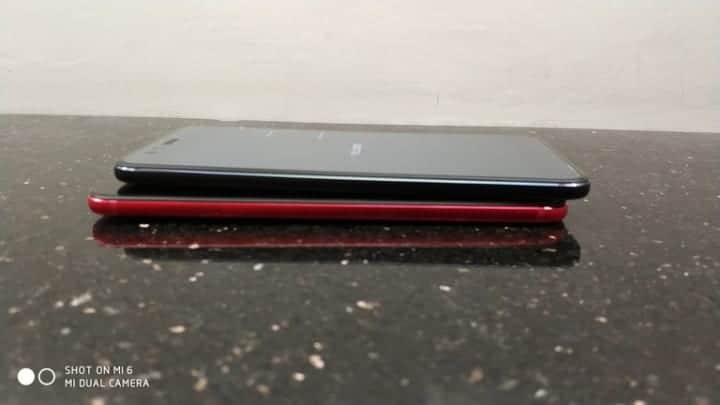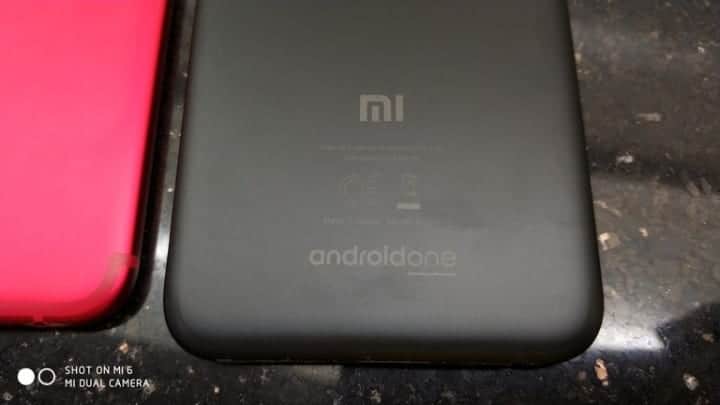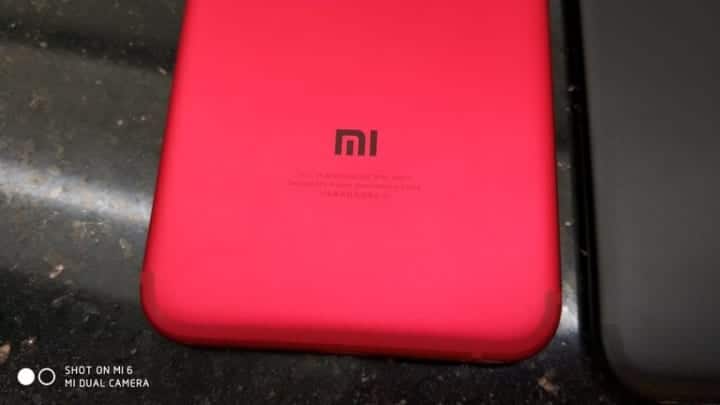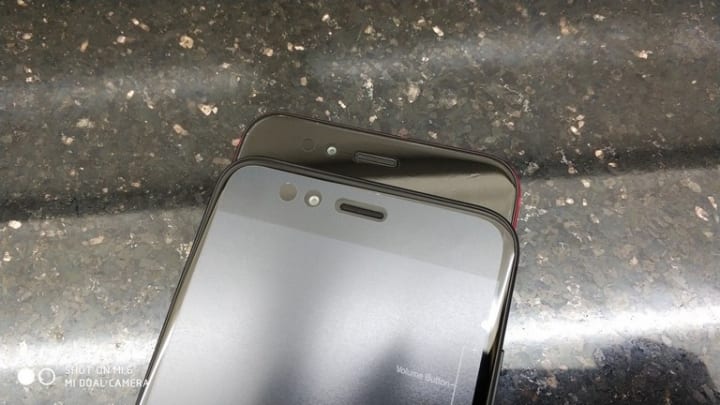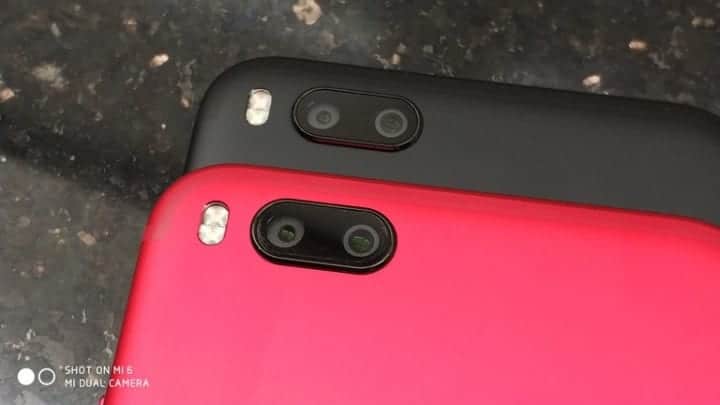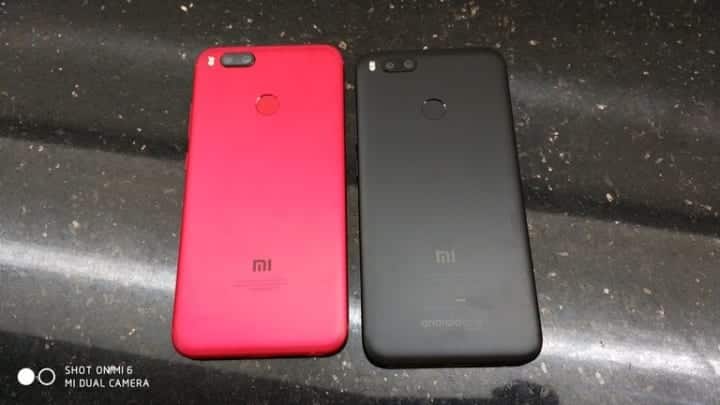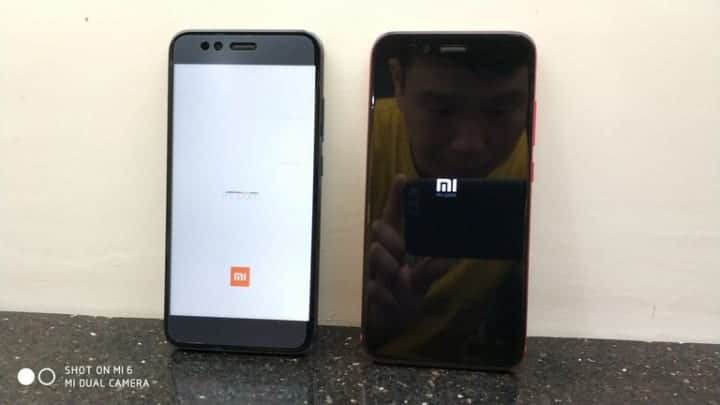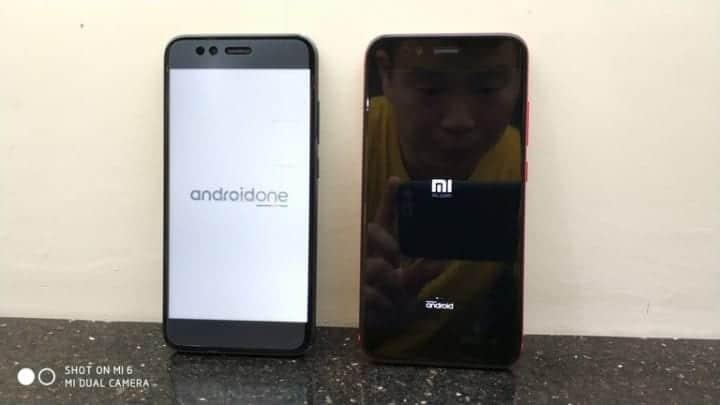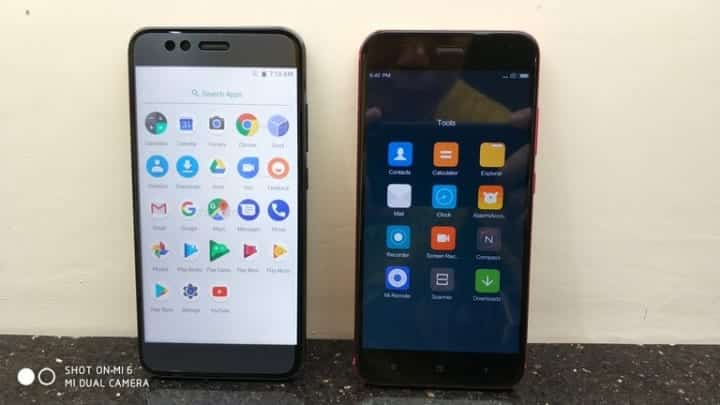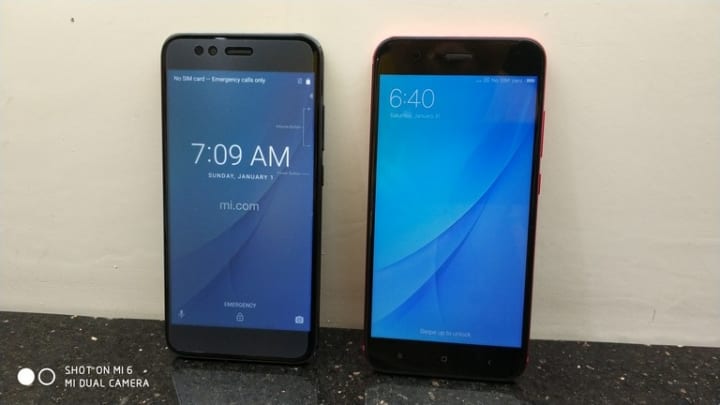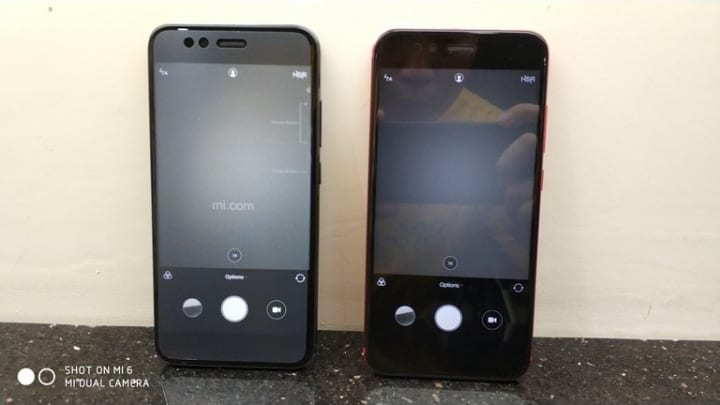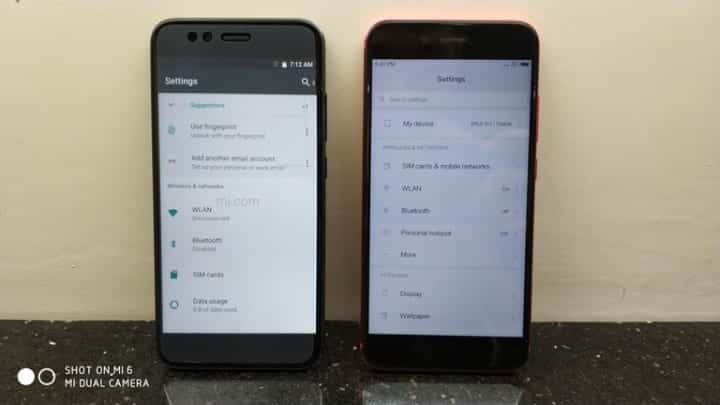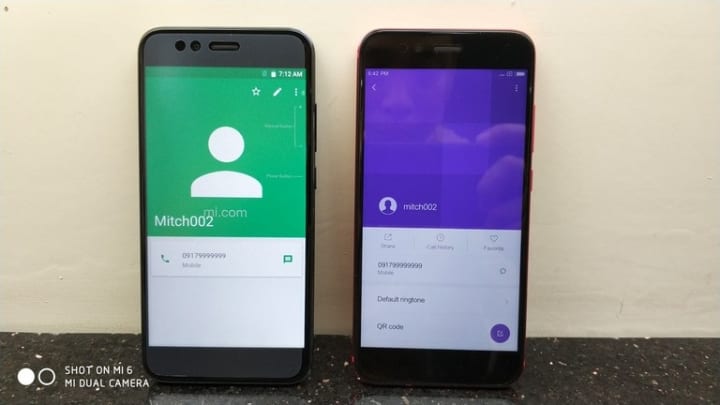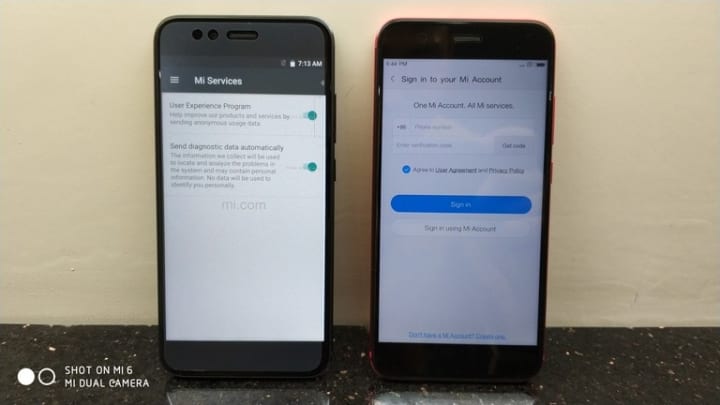The Xiaomi Mi A1 has stormed the arena of smartphones, since all users wanted to try Android in its purest, faultless and undiluted form. This leaves the Xiaomi Mi 5X, its twin brother, a bit abandoned when it comes to sales. Due to the great popularity with which these two devices count, we have decided to compare them, to see which one has the best features and which is most loved by the public. Let’s see a little what these phones bring us.

First of all, let’s look at the specifications that each one will offer us:
| Basic information | |||||
|---|---|---|---|---|---|
| Xiaomi Mi 5X | Xiaomi Mi A1 | ||||
| Brand: | Xiaomi | Xiaomi | |||
| Kind: | 4G Smartphone | 4G Smartphone | |||
| Unlocked: | Yes | Yes | |||
| SIM card slot: | Dual SIM with standby mode | Dual SIM with standby mode | |||
| SIM type: | Nano SIM | Nano SIM | |||
| Screen and dimensions | |||||
| Type of screen: | IPS Capacitive LCD, 16M colors | IPS Capacitive LCD, 16M colors | |||
| Screen size: | 5.5 inches | 5.5 inches | |||
| Screen resolution: | 1920 x 1080 (FHD) 400 pixels per inch |
1920 x 1080 (FHD) 400 pixels per inch |
|||
| Dimensions | 155.4 x 75.8 x 7.3 mm | 155.4 x 75.8 x 7.3 mm | |||
| Weight | 165 grams | 165 grams | |||
| Hardware | |||||
| CPU: | Qualcomm Snapdragon 625 | Qualcomm Snapdragon 625 | |||
| Nuclei: | Eight nuclei at 2.2GHz | Eight nuclei at 2.2GHz | |||
| GPU | Adreno 506 | Adreno 506 | |||
| RAM: | 4GB | 4GB | |||
| ROM: | 64GB of internal storage | 64GB of internal storage | |||
| External memory | Expandable up to 128 GB | Expandable up to 128GB | |||
| Connectivity | |||||
| Band technologies | 2G – GSM 1800MHz, GSM 1900MHz, GSM 850MHz, GSM 900MHz3G – WCDMA B1 2100MHz, WCDMA B2 1900MHz, WCDMA B5 850MHz, WCDMA B8 900MHz
4G LTE – FDD B1 2100MHz, FDD B3 1800MHz, FDD B5 850MHz, FDD B7 2600MHz, FDD B8 900MHz, TDD B38 2600MHz, TDD B39 1900MHz, TDD B40 2300MHz, TDD B41 2500MHz |
2G – GSM 1800MHz, GSM 1900MHz, GSM 850MHz, GSM 900MHz3G – WCDMA B1 2100MHz, WCDMA B2 1900MHz, WCDMA B5 850MHz, WCDMA B8 900MHz
4G LTE – FDD B1 2100MHz, FDD B20 800MHz, FDD B3 1800MHz, FDD B4 1700MHz, FDD B5 850MHz, FDD B7 2600MHz, FDD B8 900MHz, TDD B38 2600MHz, TDD B40 2300MHz |
|||
| Wireless connectivity | Wi-Fi – 802.11a / b / g / n / ac, Wi-Fi Dual Band, Bluetooth 4.2 | Wi-Fi – 802.11 a / ac / b / g / n /, Wi-Fi Dual Band, Bluetooth 4.2 | |||
| Interfaces | Nano SIM slot, 3.5 mm audio port, USB 2.0 type C, GPS | Nano SIM slot, 3.5 mm audio port, USB 2.0 type C, GPS | |||
| Cameras | |||||
| Main camera: | Dual 12 + 12 megapixels | Dual 12 + 12 megapixels | |||
| Front camera: | 5 megapixels | 5 megapixels | |||
| characteristics | Auto Focus, Dual-LED (Dual Tone), Flash, Portrait Mode, Geographic Location, Face Detection, Tactile Focus, Panorama, Night Mode | Auto Focus, Dual-LED (Dual Tone), Flash, Geographic Location, Face Detection, Tactile Focus, Panorama | |||
| Battery | |||||
| Battery Capacity | 3080mAh | 3080mAh | |||
| Removable | not removable | not removable | |||
Xiaomi Mi A1 vs Xiaomi Mi 5X – packaging
From this moment, we are going to realize the great similarities with which these two devices have in terms of design. As we can see, the packaging is almost identical , although the Xiaomi Mi A1 has an image of the device on the outside. The back and sides of it are similar, so we will not go into much detail here.
The dimensions that have these two boxes are identical, plus they both have the same accessories – the respective device, a user manual, a cable USB Type C, a small tool to remove the SIM card, a Quick 2.0 charger and a free screen protective film.
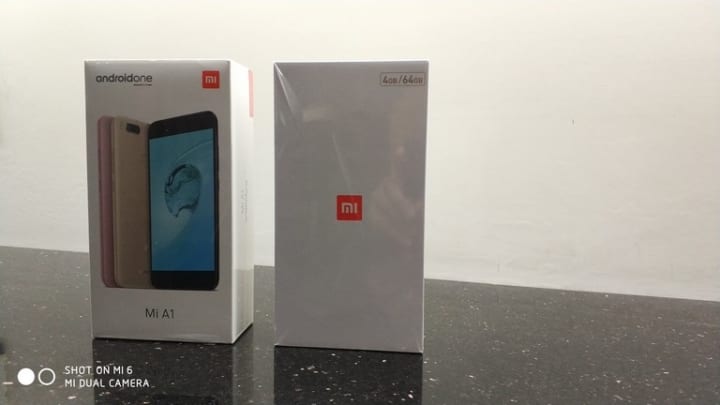
Xiaomi Mi A1 vs Xiaomi Mi 5X – dimensions and designs
At first glance it is seen that the two phones are more than similar, in fact, they have the same dimensions. The only thing that we will find different between these two may be the fact that one comes with a protective screen made of plastic, while the other does not. With respect to the screens, they have the same size and design.

We can see same ports, speaker and buttons in same location on the sides as well as on the lower and upper part. On the right side we will find the sound controls and the power button. Seen at the top are the noise cancellation mic and infrared blaster. On the left we found tray for the SIM and SD card. Finally, at the bottom are the charging port, the 3.5mm audio connector and grills for speaker.
In both phones we find a dual camera with dual LED flash and a fingerprint reader on the rear. On the front, we find the cameras which are specially made for selfies at the left hand side of the top speaker. While here we will continue to find a lot of similarities, there is a little different detail – the logos. While the Mi A1 has the Android One logo printed on the bottom, the Mi 5X only has the Xiaomi logo.
Xiaomi Mi A1 vs Xiaomi Mi 5X – user interface
In case you were wondering where we could get significant differences between these two phones, well here you have them. When you turn them on, you will see that the screen of mi A1 becomes white, while Mi 5X remains black. In addition to the differences between the colors, both start with different logos, since one has the Android One logo while the other has the simple Mi logo.
When they are already fully turned on, we continue to see the differences. With the screen locked, we can see that both types of lock screen are different, just like the home screen. You can definitely notice that one account with a simpler design than the other. At the same time, you can see the difference between the menus they have, since the one in Mi A1 is a bit more messy compared to the My 5X, since in the latter the applications are organized by folders.
The camera was customized by Xiaomi to somehow connect to these two devices, since we can see the same functions in the same places. All modes, whether manual or not, are located in the same position, so we will not find any difference here. As we continue to look, we notice that both the contacts, the message tray and the configuration are very similar.
Finally, the last two features we saw were the Mi Account page and the drop-down menu for notifications. Although they have the same functions, they are shown and work in slightly different ways.
Xiaomi Mi A1 vs Xiaomi Mi 5X – software support
The Mi 5X was launched with Android Nougat sporting MIUI 8 that can be upgraded to MIUI 9 via OTA, and continues to receive updates every week, while the Mi A1 features Android Oreo. There are not many updates to implement the Mi A1, since there is not much to fix due to the great work put into it. But not having failures comes with a price, and that is that you need to install everything on your own and with your own personalization. Now, in addition to that, we will find another disadvantage – once something of the phone fails, you will only have the opportunity to look for the error, while MIUI can report on the error and the developers will work on a solution for you.
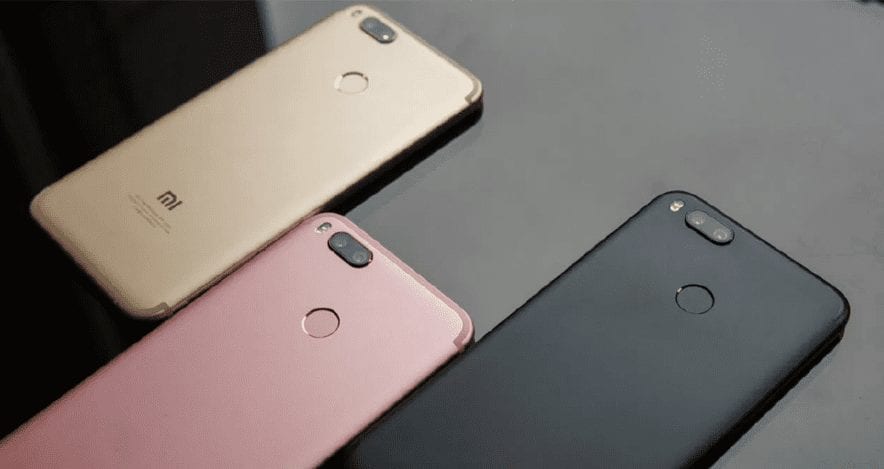
Final verdict
If you are an adventurous person, you may want to try the Xiaomi Mi A1 and probably customize everything to the fullest according to your own taste. But if you are a conventional person and are well adopted for the MIUI system, it is best to keep the Xiaomi Mi 5X. The cameras are the same, they took the same pictures. Both phones are easy to use, it’s just that I’m more used to MIUI.
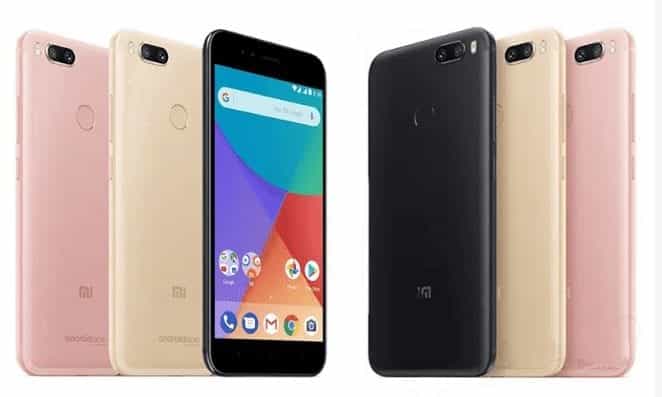
Are you interested in purchasing any of these devices?
Well, in that case, you can easily get them in the Gearbest online store. The Xiaomi Mi A1 is priced at $ 199.99, while the Xiaomi Mi 5X is priced at $ 198.99. We have to tell you that this is a discounted price, thanks to Gearbest, so we recommend you hurry. Both devices are a great choice of purchase, so the favorite you choose.
Buy Xiaomi Mi 5X Now Click Here
Buy Xiaomi Mi A1 Now Click Here

